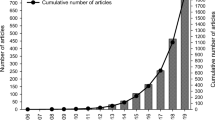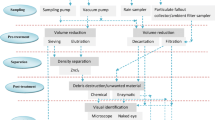Abstract
Five nitrosamines (nitroso-methyl-ethylamine (NMEA), nitroso-pyrrolidine (NPYR), nitrosodi-ethylamine (NDEA), nitroso-piperidine (NPIP), and nitrosodi-butylamine (NDBA)) in the atmospheric particulate matter with an aerodynamic diameter of less than or equal to a nominal 10 μm (PM10) at Seoul were identified and quantified by using a gas chromatography/mass spectrometry (GC/MS) in chemical ionization (CI) mode. The average ambient concentrations of the sum of the five nitrosamines showed a distinctive seasonal pattern, higher in winter (2.79 ± 1.41 ng/m3) than in summer (0.92 ± 0.29 ng/m3). Diurnal pattern showed slightly higher in night time (1.67 ± 1.47 ng/m3) than day time (1.57 ± 1.04 ng/m3) but it was not statistically significant. Possible contributors of nitrosamines were discussed based on various statistical analyses. Since BaP/BeP ratio and nitrosamines’ concentrations showed negative correlation, indicating aged aerosols containing more nitrosamines, it was suggested that nitrosamines might be produced by the atmospheric reactions. However, the correlations of nitrosamines with PAHs, CO, and SO2 were also good which were emitted from the primary emission sources, suggesting the particulate nitrosamines observed at Seoul could be also emitted from the primary emission sources. Primary emission sources were also identified by using the principal component analysis (PCA). It was concluded that NDBA could be mainly emitted from plastic and rubber combustions, release of landfill and tobacco smoke, and NPYR and NDEA might be emitted from the vehicular emission and cooking. The other nitrosamines, NMEA and NPIP, which were not included in both factors and showed relatively higher negative correlation with BaP/BeP ratios than other nitrosamines, could be produced from the atmospheric reactions.


Similar content being viewed by others
References
Abdullahi KL, Delgado-Saborit JM, Harrison RM (2013) Emissions and indoor concentrations of particulate matter and its specific chemical components from cooking: a review. Atmos Environ 71:260–294
Akyüz M, Ata Ş (2013) Seasonal variations of particle-associated nitrosamines by gas chromatography–mass spectrometry in the atmospheric environment of Zonguldak, Turkey. Environ Sci Pollut Res 20:7398–7412
Aragón M, Marcé R, Borrull F (2013) Determination of N-nitrosamines and nicotine in air particulate matter samples by pressurised liquid extraction and gas chromatography-ion trap tandem mass spectrometry. Talanta 115:896–901
Bretschneider K, Matz J (1975) Occurrence and analysis of nitrosamines in air. International Agency for Research on Cancer (IARC) scientific publications 395–399
Choi NR, Lee SP, Lee JY, Jung CH, Kim YP (2016a) Speciation and source identification of organic compounds in PM10 over Seoul, South Korea. Chemosphere 144:1589–1596
Choi NR, Kim YP, Ji WH, Hwang GS, Ahn YG (2016b) Identification and quantification of seven volatile n-nitrosamines in cosmetics using gas chromatography/chemical ionization-mass spectrometry coupled with head space-solid phase microextraction. Talanta 148:69–74
Farren NJ, Ramírez N, Lee JD, Finessi E, Lewis AC, Hamilton JF (2015) Estimated exposure risks from carcinogenic nitrosamines in urban airborne particulate matter. Environ Sci Technol 49:9648–9656
Fine D, Rounbehler DP, Belcher N (1976a) N-Nitroso compounds: detection in ambient air. Science 192:1328–1330
Fine DH, Rounbehler DP, Pellizzari ED, Bunch JE, Berkley RW, McCrae J, Bursey JT, Sawicki E, Krost K, DeMarrais GA (1976b) N-Nitrosodimethylamine in air. Bull Environ Contam Toxicol 15:739–746
Fischer C, Maurice C, Lagerkvist A (1999) Gas emission from landfills. An overview of issues and research needs. Swedish Environmental Protection Agency, Stockholm
Ge X, Wexler AS, Clegg SL (2011a) Atmospheric amines—part I. A review. Atmos Environ 45:524–546
Ge X, Wexler AS, Clegg SL (2011b) Atmospheric amines—part 2. Thermodynamic properties and gas/particle partitioning. Atmos Environ 45:561–577
Gordon RJ (1978) Survey for airborne nitrosamines. University of Southern California School of Medicine, for the California Air Resources Board Contract No. A6-096-30
Grosjean D (1991) Atmospheric chemistry of toxic contaminants. 6. Nitrosamines: dialkyl nitrosamines and nitrosomorpholine. J Air Waste Manage Assoc 41:306–311
Hanst PL, Spence JW, Miller M (1977) Atmospheric chemistry of N-nitroso dimethylamine. Environ Sci Technol 11:403–405
Harrison RM, Smith D, Luhana L (1996) Source apportionment of atmospheric polycyclic aromatic hydrocarbons collected from an urban location in Birmingham, UK. Environ Sci Technol 30:825–832
Hong Y, Kim KH, Sang BI, Kim H (2017) Simple quantification method for N-nitrosamines in atmospheric particulates based on facile pretreatment and GC-MS/MS. Environ Pollut 226:324–334
Hutchings JW, Ervens B, Straub D, Herckes P (2010) N-nitrosodimethylamine occurrence, formation and cycling in clouds and fogs. Environ Sci Technol 44:8128–8133
IARC (1978) IARC monographs on the evaluation of carcinogenic risks to humans. World Health Organization (WHO) http://monographs.iarc.fr/ENG/Classification/. Accessed 20 July 2017
KMA (2015) Past climate data. Korea Meteorological Administration (KMA) http://www.kma.go.kr/weather/climate/past_cal.jsp. Accessed 20 July 2017
Låg M, Lindeman B, Instanes C, Brunborg G, Schwarze P (1984) Health effects of amines and derivatives associated with CO2 capture. IARC Science Publication 57
Lee JY, Shin HJ, Bae SY, Kim YP, Kang CH (2008) Seasonal variation of particle size distributions of PAHs at Seoul, Korea. Air Qual Atmos Health 1:57–68
Lee JY, Kim YP, Kang CH (2011) Characteristics of the ambient particulate PAHs at Seoul, a mega city of Northeast Asia in comparison with the characteristics of a background site. Atmos Res 99:50–56
Lu H, Zhu L (2007) Pollution patterns of polycyclic aromatic hydrocarbons in tobacco smoke. J Hazard Mater 139:193–198
MFDS (2013) Criteria for the equipment, containers and package (2013-246). Korea Ministry of Food and Drug Safety. (MFDS) http://www.lawnb.com/data/Focuslawdata/lawnbfocusB00029494540.pdf. Accessed 23 June 2017 (Written in Korean)
Nerín C, Aznar M, Carrizo D (2016) Food contamination during food process. Trends Food Sci Technol 48:63–68
Nielsen CJ, Herrmann H, Weller C (2012) Atmospheric chemistry and environmental impact of the use of amines in carbon capture and storage (CCS). Chem Soc Rev 41:6684–6704
NIER (2016) Annual report of ambient air quality in Korea, 2015. National Institute of Environmental Research (NIER). http://library.me.go.kr/search/DetailView.ax?sid=11&cid=5592360. Accessed 20 July 2017
NTP (2016) 14th Report on Carcinogens (RoC). National Toxicology Program (NTP). US Department of Health and Human Services. https://ntp.niehs.nih.gov/pubhealth/roc/index-1.html. Accessed 20 July 2017
Ravindra K, Sokhi R, Van Grieken R (2008) Atmospheric polycyclic aromatic hydrocarbons: source attribution, emission factors and regulation. Atmos Environ 42:2895–2921
Sen N, Seaman S, Miles W (1976) Dimethylnitrosamine and nitrosopyrrolidine in fumes produced during the frying of bacon. Food Cosmet Toxicol 14:167–170
Shapley D (1976) Nitrosamines: scientists on the trail of prime suspect in urban cancer. Science 191:268–270
US EPA (1972) Clean Air Act. United States Environmental Protection Agency (US EPA) https://www.epa.gov/laws-regulations/summary-clean-water-act. Accessed 23 June 2017
US EPA (1976a) Resource Conservation and Recovery Act. United States Environmental Protection Agency (US EPA). https://www.epa.gov/laws-regulations/summary-resource-conservation-and-recovery-act. Accessed 23 June 2017
US EPA (1976b) Toxic Substances Control Act. United States Environmental Protection Agency (US EPA). https://www.epa.gov/laws-regulations/summary-toxic-substances-control-act. Accessed 23 June 2017
US EPA (1980) Comprehensive Environmental Response, Compensation, and Liability Act. United states Environmental Protection Agency (US EPA). https://www.epa.gov/laws-regulations/summary-comprehensive-environmental-response-compensation-and-liability-act. Accessed 23 June 2017
US EPA (2017) Regional screening levels (RSLs)—generic tables (November 2017). United States Environmental Protection Agency (US EPA). https://semspub.epa.gov/work/HQ/197025.pdf. Accessed 26 Feb 2018
US FDA (1984) CPG Sec. 500.450 volatile N-nitrosamines in rubber baby bottle nipples. United States Food and Drug Administration (US FDA). https://www.fda.gov/ICECI/ComplianceManuals/CompliancePolicyGuidanceManual/ucm074418.htm. Accessed 23 June 2017
Valavanidis A, Iliopoulos N, Gotsis G, Fiotakis K (2008) Persistent free radicals, heavy metals and PAHs generated in particulate soot emissions and residue ash from controlled combustion of common types of plastic. J Hazard Mater 156:277–284
Walters C, Downes M, Edwards M, Smith P (1978) Determination of a non-volatile N-nitrosamine on a food matrix. Analyst 103:1127–1133
WHO (2008) N-Nitrosodimethylamine in drinking-water. World Health Organization (WHO). ttp://www.who.int/water_sanitation_health/dwq/chemicals/ndma_2add_feb2008.pdf. Accessed 23 June 2017
Funding
This work was supported by the National Research Foundation of Korea (NRF-2017R1A2B4006760), Korea Basic Science Institute grant (C38705), and Korea Meteorological Administration (CATER 2014-3190).
Author information
Authors and Affiliations
Corresponding author
Rights and permissions
About this article
Cite this article
Choi, N.R., Ahn, Y.G., Lim, H.B. et al. Particulate nitrosamines in the atmosphere at Seoul and their major sources. Air Qual Atmos Health 11, 855–865 (2018). https://doi.org/10.1007/s11869-018-0594-0
Received:
Accepted:
Published:
Issue Date:
DOI: https://doi.org/10.1007/s11869-018-0594-0




